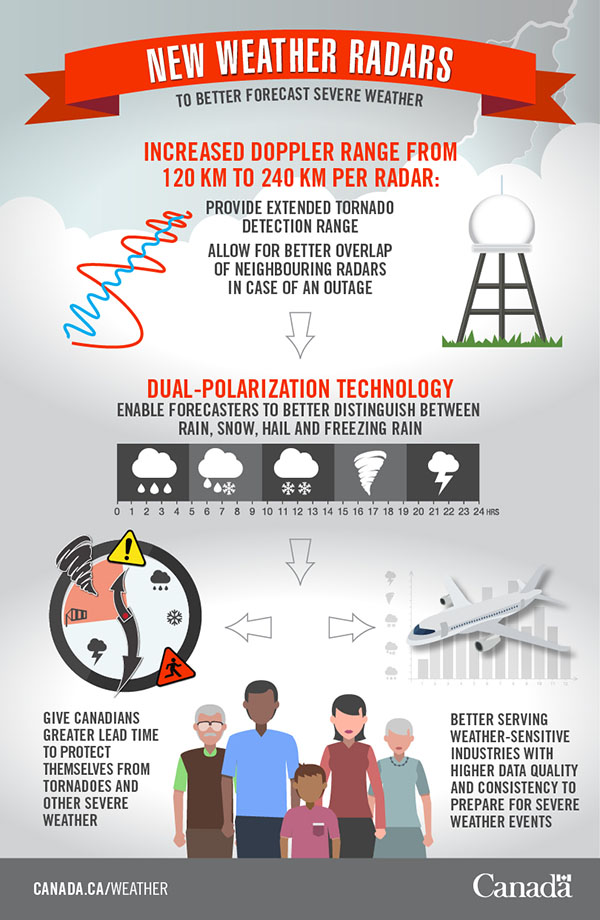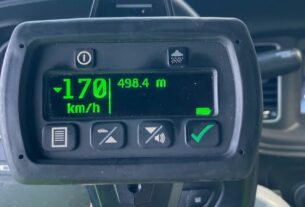**** Info via Environment Canada
How radars work
On October 31, the new Marble Mountain radar in Newfoundland was up and running. The new radar will provide more frequent and higher-quality data and improve our ability to detect severe weather. But how exactly do radars work?
Radio Detection and Ranging, commonly referred to as RADAR, is a tool that provides data that can be quite beneficial when making weather-sensitive decisions. Canada has a network of radar concentrated in the most populated parts of Canada, providing radar coverage to more than 95 percent of Canadians.
Locations of Canadian weather radar sites.
Weather radars use a parabolic antenna, like the dish type of antenna attached to certain homes, to focus a pulsed radio-frequency beam out into the atmosphere, much like a “searchlight.” Radars send a brief pulse and then listen for echoes to return. The “listening” receivers then record these echoes.

Major components of a weather radar.
When the energy emitted by the radar antenna strikes particles of precipitation, such as drops of water, snowflakes, ice pellets, or hail, a portion of that energy is reflected back to the radar. The intensity of this energy is related to the number, size and type of the precipitation particles.
Radar interpretation
Radar scans in many elevations and directions to make the radar image we use. When you look at a radar image, you are looking at a picture of the precipitation in a specific area, called “echoes,” and its intensity. Radar echoes are represented by a series of coloured pixels, as illustrated on the scale to the bottom of the radar map, which is an interpretation of how light or heavy the precipitation is.
Radar map of New Brunswick and parts of Quebec experiencing light to moderate precipitation.
Our radar modernization project
In fall of 2017, we started upgrading our radar network. So far, we have replaced 26 radars out of our current 31 radars, and we have added two new radars to our network. We hope to complete the project by March 31, 2023.





